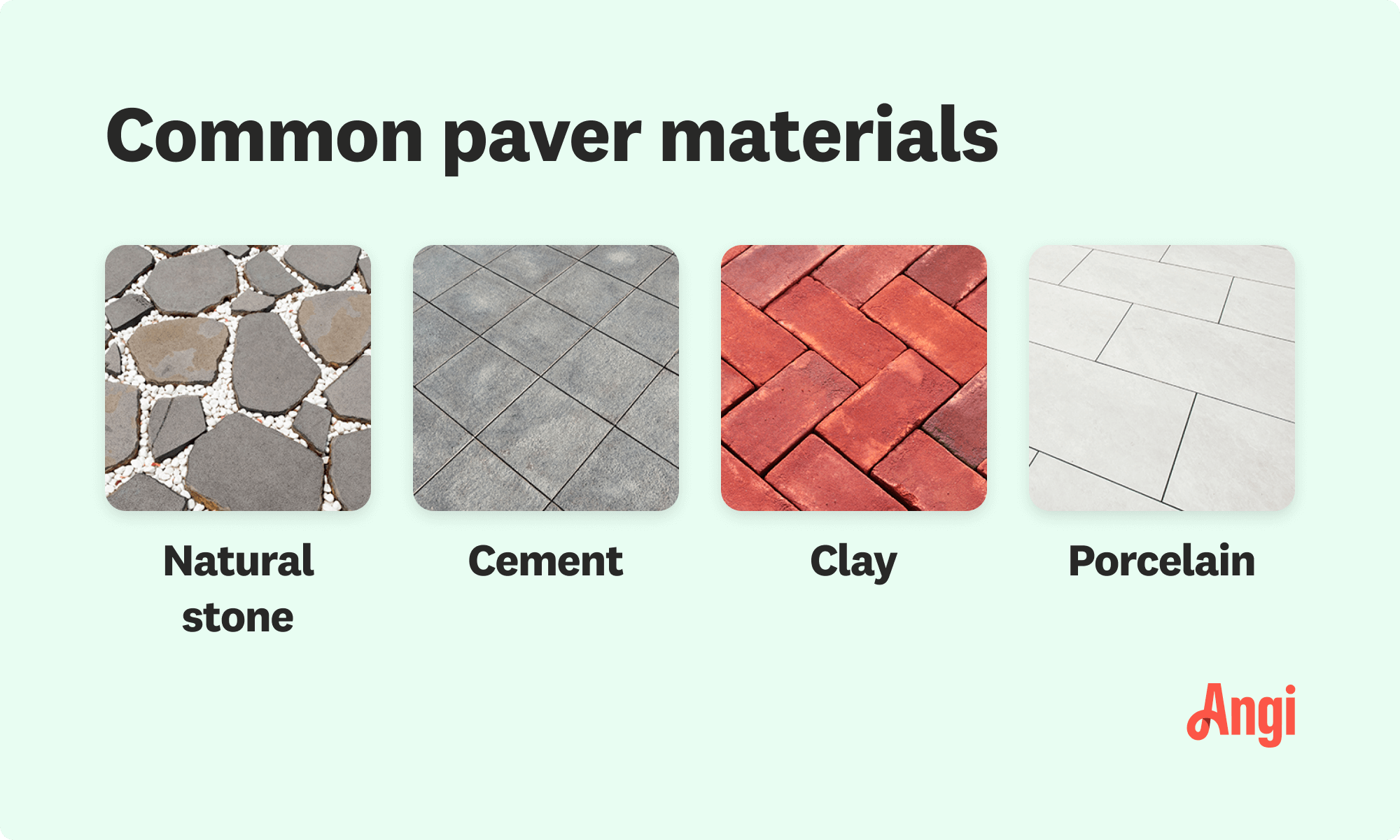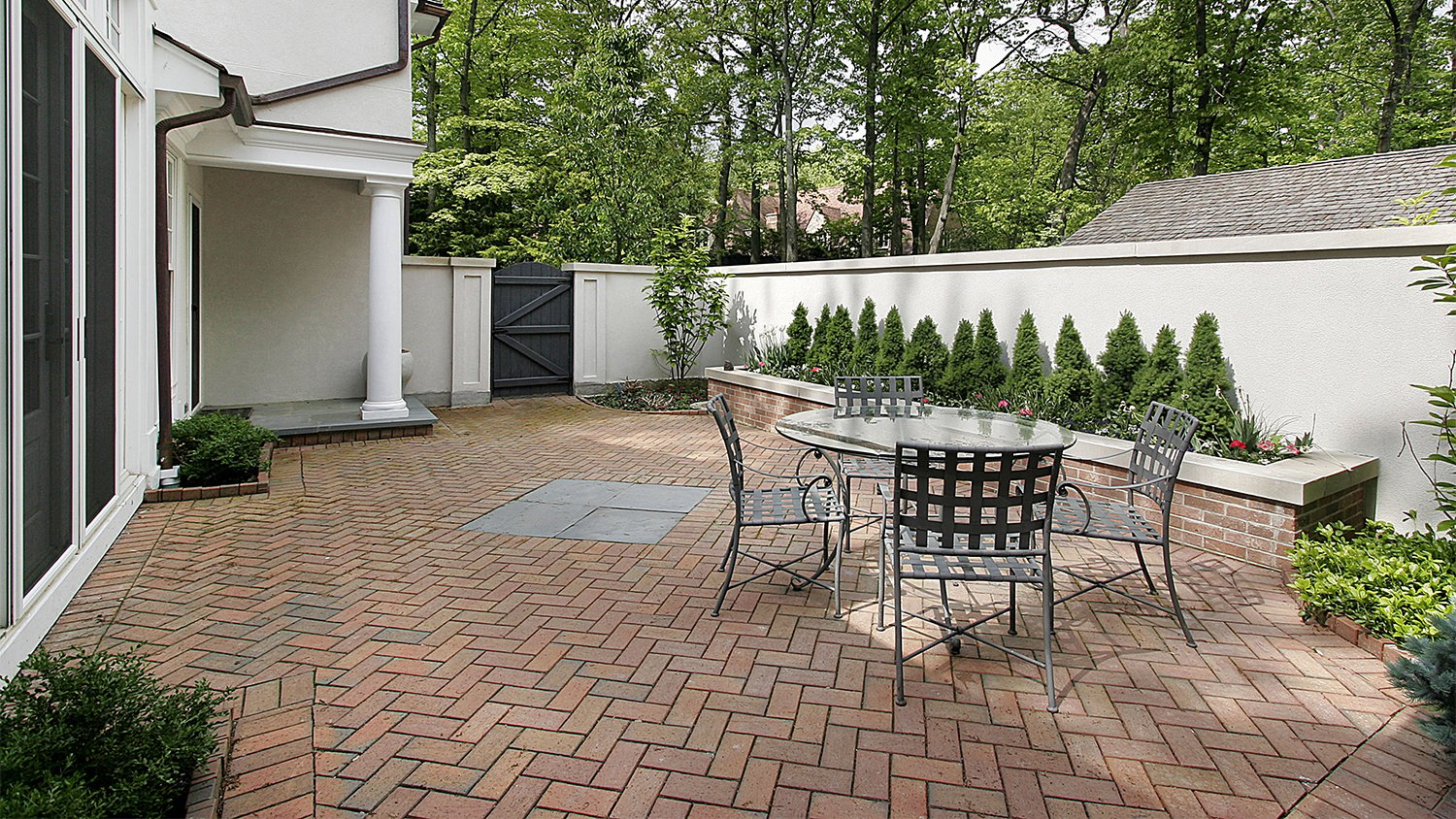What Are Pavers and How Do They Help Build an Outdoor Paradise?
Give your backyard a major glow-up by adding pavers to your hardscape
.jpeg?impolicy=leadImage)
.jpeg?impolicy=leadImage)
Pavers are a durable outdoor flooring option that comes in many materials.
Choose from cement, brick, or natural stone pavers.
Use pavers for your driveway, walkways, patios, pool decks, and more.
Depending on the material, pavers cost $8 to $50 per square foot.
There’s no doubt that spending time outdoors in your backyard paradise is a fantastic way to enjoy your downtime. But in the heat of summer, that cement slab patio is probably a little uncomfortable, not to mention glaringly bright when the sun’s rays are shining on it. To give your backyard paradise a major glow-up, consider adding pavers.
The benefits of pavers include not only helping to beautify a space but also cutting down on maintenance, giving you more time to enjoy outdoor living and less time spent maintaining it.
What Are Pavers?
Pavers, also called paving stones, are shaped stones made of brick, cement, or natural stone that make up different types of flooring in outdoor spaces. Whether you want to install cement pavers in your countryside cottage or high-end marble pavers in your chic, modern home, these stones are versatile enough to fit any setting.
A paver system is a great building block for almost any floor covering in your yard, ranging from driveways, walkways, pool decks, patios, and fire pit surrounds. Considering that they’re low-maintenance, highly durable, and long-lasting, it’s easy to see why pavers are a go-to option for yards.
Types of Pavers for Your Yard
.jpeg?impolicy=leadImage)
There are many types, styles, and benefits of pavers available for residential use. Pavers come in different colors and shapes and can be made from different materials to create striking color and texture combinations. The types of pavers you choose depend on your intended use and personal taste.

1. Natural Stone Pavers
Natural stone is mined from the Earth, so each paver has a unique look and pattern. This type of paver withstands the elements well and adds a timeless look to outdoor spaces, often gaining more character as it ages. Natural stone pavers are easy to maintain, only requiring regular sweeping and occasional spraying with a hose to remove debris.
There are many types of natural stone pavers, and each will bring a different aesthetic to your backyard paradise. Whether you’re going for a natural look that mimics the great outdoors, a posh space for hosting outdoor dinner parties, or a comfy sitting area to enjoy a fire pit, you can find a stone to match your dream.
When exploring options for natural stone pavers, you can choose from the following types of stone:
Granite
Bluestone
Flagstone
Limestone
Travertine
Marble
Sandstone
Slate
2. Cement Pavers
These pavers are made from cement that is placed into molds, shaped, and dried. Dyes can be added and patterned to mimic natural stone and textures, and other finishes may be added to increase aesthetic appeal.
Cement pavers are more durable than cement slabs individually and as a whole due to the fact that they are separated by thin grooves filled with sand that allow for flexibility and the slight changes in size caused by seasonal temperature fluctuations. Cement pavers can be placed in a variety of patterns to create visual appeal in outdoor spaces.
3. Clay Pavers
Clay pavers, which are also called brick pavers, are created from a variety of clays that are high-fired in a kiln, producing tough, resilient, and durable paving stones. Depending on the types of clay used, these pavers can be found in shades from brick red and orange terracotta to pale creams and whites.
Since they are created using natural clays and not dyes, the colors do not fade over time with exposure to the elements and UV radiation from the sun.
4. Porcelain Pavers
Porcelain is another popular type of clay paver with its own benefits. Porcelain is made of finer clay than brick pavers and is high-fired in a kiln. These pavers are durable despite being made of porcelain, which is traditionally thought of as a fragile material. They are water- and oil-resistant when properly sealed, making them ideal for outdoor spaces, and they can hold up for decades with minimal care and maintenance.
Benefits of Upgrading to Pavers
There are many benefits to upgrading your outdoor spaces with pavers, both aesthetically and economically.
Pavers increase your property value by up to a 70% return on investment.
Pavers beautify outdoor spaces. A pathway to your garden or a patterned patio will increase visual appeal and break up the monotony of a lawn space.
Pavers are easier to maintain than wood decks. There’s no need to worry about staining and sealing wood every few years and unlike wood, there’s no need to worry about replacing rotten deck boards.
Pavers are more durable than cement slabs. Pavers won't crack or shift like a slab patio and if one paver cracks, you can replace it, and not have to redo the entire space like with a slab.
Paver patios and driveways can last well over 50 years if they’re installed properly.
Pavers are easy to maintain and inexpensive to repair.
Drawbacks of Pavers
Although there are many great things about pavers, know the disadvantages before committing.
Cost: At $8 to $50 per square foot, your costs for pavers are considerably more than gravel costs at $1 to $3 per square foot. Another popular alternative, cement slabs, costs $4 to $8 per square foot.
Difficult to DIY: Pavers require precise, time-consuming installation. A patio installation could take two to five days, and larger projects could take a week or longer. If you’re in a rush, pavers aren’t the best option.
Alternatives to Pavers
The most commonly used materials in outdoor spaces are cement and wood, and both come with unique drawbacks compared to pavers.
Cement Slabs
What’s the difference between pavers and cement slabs? Cement is prone to mildew and mold, discoloration, and cracking from frost heave and water seepage.
Repairing cement cracks can be both costly and time-consuming and if done incorrectly, cracks will continue. Though cement slabs are inexpensive on the front end, their upkeep and repair over the long term make them a costly option for outdoor spaces.
Wooden Decks
Wooden decks and patios are commonplace throughout the country, and though they offer high visual appeal, the upkeep they require is taxing both physically and financially. Staining or painting your wooden deck is required every few years to prevent boards from becoming water-damaged and rotting.
If rot does occur, entire sections of decking must be replaced. If rot becomes widespread, it could pose a physical danger to you and your family.
Your landscape, environment, and desired aesthetic will inform the type of hardscaping material you need. For example, stone pavers are ideal for temperate climates. If you're not sure what material is right for you, consult with a landscaping professional.
How Much Do Pavers Cost to Install?
Expect your paver installation costs to range between $8 and $25 per square foot, including materials and labor. If you opt for natural stone, this cost can increase to $50 per square foot. For example, a cement paver patio costs around $480 for 60 square feet. On the other hand, a 200-square-foot natural stone paver patio can cost as much as $10,000.
Plan for additional costs, including patio paver sealing, which is $200 for 1,000 square feet. Sealing your pavers will make them weather-resistant and increase their life span. Depending on your yard, you might need to budget for other landscaping costs, like border plants, which average $2 to $50 per plant, or new turf that runs $2 to $6 per square foot.
Hire a hardscape contractor near you to find out exactly how much your vision will cost. They can also provide guidance on how many pavers your project requires and the best way to maintain them.
How to Maintain Pavers
Maintaining pavers is fairly easy. Keeping them clean is the first requirement—this can be done by sweeping them regularly and rinsing them with water. Along with cleaning, pavers will need to be re-sealed every two to five years, depending on the type of sealant you use. Water-based sealants usually need to be re-sealed less than acrylic sealers.
Frequently Asked Questions
You’ll first need to install a base underneath your pavers for extra stability and drainage. Otherwise, the pavers can sink into the ground, and you’ll have to reinstall them. Use a base gravel layer of 4 to 6 inches for walkways and 10 to 12 inches for driveways. Compact your gravel layer every 2 to 4 inches so it’s nice and solid. After you install your gravel base, apply a 1-inch layer of sand on top.
Pavers usually last for about 20 to 25 years. But, if you’re diligent enough with regular upkeep and care, they can last up to 50 years.
The best material to put between pavers is polymeric sand. This sand contains silica and quartz, making it more durable than coarse or regular sand. It hardens after installation, so your pavers stay in place. Best of all, polymeric sand prevents weed growth in the gaps between pavers. You’ll have less maintenance to deal with once spring rolls around.





- Deciding Between Concrete, Stone, or Brick Pavers? Pros, Cons, and Cost Compared
- How to Lay Pavers Like a Pro and Create Your Dream Outdoor Space
- Pavers vs. Concrete: Which to Use for Your Home Project
- The Ultimate Guide to Pool Deck Pavers
- What Are Interlocking Pavers?
- Installing Pavers? Here’s What You Need to Know About Drainage
- Pros and Cons of Tumbled Pavers
- How to Stop Tree Roots From Lifting Pavers: 10 Tips
- 5 Best Driveway Material Options and How to Choose the Best One
- What Is Permeable Paving? Everything You Need to Know











